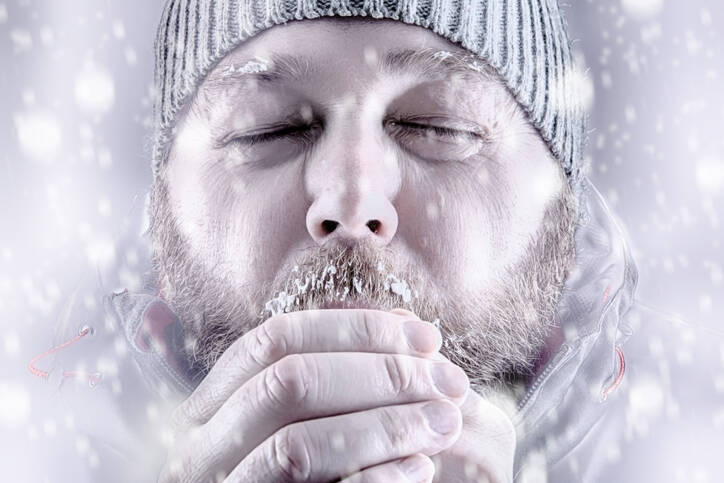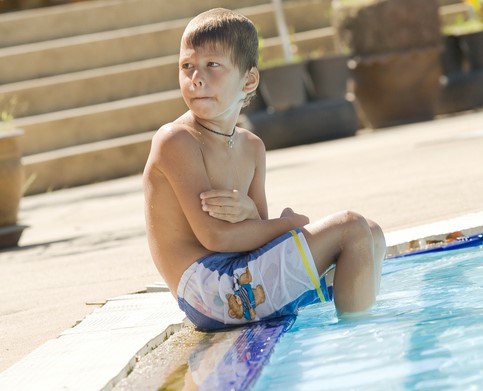Decreased body temperature: what are the most common causes? + Values in the table

It also occurs as a symptom of disease, especially in endocrine disorders or brain damage in the area of thermoregulation, which is controlled from the hypothalamus. Very often, the decrease in body temperature is of course caused by the environment. With a long duration and low body temperature, it threatens health and life. However, it has also found its use in medicine.
Although most people have a body temperature in the range of 36 to 37 degrees Celsius, the normal value can vary from person to person and is individual. For example, the elderly, but also young children, sometimes have a lower temperature and it is not a disease state.
Sometimes the body temperature is also related to the body's metabolism. At rest it is lower than during activity. However, if the temperature is lowered due to the environment, there are also problems.
Hypothermia due to the external environment

hypothermia can cause several problems for a person. If it is caused by the ambient temperature, heart rhythm disturbances (arrhythmias) occur at a certain body temperature.
The heart can fail, the body does not get enough oxygen due to reduced heart activity, and even thermoregulation itself fails.
Frostbite can develop on the body when the ambient temperature is low. Frostbite occurs when the body is damaged by low temperatures over a prolonged period of time. The major risks of frostbite include impaired blood circulation to the extremities.
Frostbite is most common on the extremities of the body, on the hands and feet, where blood flow is weakest due to regulatory mechanisms during hypothermia. Reduced blood flow causes ischaemic changes and tissue damage if the environmental influence persists.
If the body temperature falls below 34 degrees Celsius, disturbances of consciousness occur. Firstly, there is a qualitative (disorientation) disturbance of consciousness, later a quantitative (drowsiness to coma). At a later stage, circulatory and respiratory failure.
It is for this reason that reduced body temperature is dangerous in the long term. It does not usually reach such critical values without external factors that could cause cardiac or respiratory arrest.
How hypothermia affects the body
Hypothermia, as the condition of low body temperature is called, is characterized by an involuntary drop in body temperature below a person's normal body temperature. In most cases, it causes blood vessels to constrict, thus reducing heat loss. Breathing is faster and shallower.
If the body temperature falls as much as 4 degrees Celsius below the normal human temperature, the most serious symptoms occur. These include inability to speak, inability to move the hands, blueness of the skin, and metabolic processes in the cells stop.
Later, major body organs fail. Death most often occurs when the internal temperature drops below 24 degrees Celsius.
The table shows the values of body temperature and their relationship to bodily functions
| Value in degrees Celsius | Name | Information |
| less than 29 | severe hypothermia |
cold skin, stiffness
non-palpable pulse
below 28 °C-24 °C
|
| 29-32 | moderate hypothermia |
slowing of reflexes
reduced oxygen consumption (used in controlled hypothermia)
below 32 °C disturbance of consciousness:
|
| 33-35 | mild hypothermia | confusion, fine motor disturbances, shivering below 34 °C speech impairment, rapid breathing, rapid pulse |
| 35,9-36,9 | normal body temperature | normothermia |
| 37-38 | Elevated body temperature | subfebrile the body is trying to fight pathogens |
| 38,1-40 | fever | febrile or even febris lowering of body temperature is recommended |
| 40-42 | overheating of the organism | hyperpyrexia |
| above 42 | death |
+ Have you ever taken a thermometer reading of less than 35 or much less? Even when measured in a normal environment, at room temperature and when you were not exposed to cold?
In this situation, the problem may not be your temperature, but the sensitivity of the thermometer. A digital thermometer may simply not be sensitive at a normal reading. Of course, the reason may also be a faulty measurement.
In other measurements, it will measure an elevated temperature or fever, but it may not be sensitive enough at less than 36°C. Here, it is more a question for the manufacturer as to how the piece is set up and capable of accurate measurement.
What are the causes of hypothermia?
Hypothermia in humans is caused by the environment. But we also know of some diseases that cause a reduction in body temperature.
Disease conditions and other causes that cause a decrease in body temperature include:
- hypothyroidism (reduced production of thyroid hormones)
- impaired adrenal function
- hypopituitarism (disorder of the pituitary gland)
- reduced immunity
- anaemia
- hypoglycaemia (lower blood sugar)
- malnutrition
- intoxication
- brain damage, tumour (hypothalamic dysfunction)
- trauma, burns and other shock conditions, centralised circulation, exsanguination of peripheral, terminal parts of the body
- in some cases of sepsis (septic shock), also for centralisation of circulation
- certain drugs (barbiturates, sedatives)
- congestion and fatigue
- alcohol
- drugs
Hypothermia is more dangerous in children
Young children, especially newborns and infants, are very susceptible to heat loss. In newborns, a rapid drop in body temperature occurs when heat is lost. They quickly develop hypothermia, followed by disturbances in heart rhythm and breathing. If persistent, circulatory and respiratory failure, and thus death, can occur.
Therefore, it is important that the newborn baby is protected from heat loss. The greatest heat loss occurs through the head, and of course through the limbs and the rest of the body. But it is similar in adults.

In children, signs of hypothermia can be observed, such as:
- bad mood
- refusal to play
- apathy
- headache
- lack of appetite
Even in children, a decrease in body temperature can occur as a result of several medical conditions. Such as immune disorders, vitamin C deficiency, anaemia, intoxication, thyroid and adrenal diseases.

But most of the time, the cause lies in external factors, these include:
- prolonged stay in a cold environment
- insufficient clothing and protection of the extremities (hat, gloves, scarf)
- damp and wet clothing, for example after rain
- even in summer when swimming, leaving the pool
Preventing heat loss in young children involves sufficient clothing and therefore covering the head. Cotton clothing that is airy and does not cause excessive sweating in the baby is suitable.
For older children, in addition to sufficient clothing, it is advisable to increase physical activity. A balanced and varied diet containing sufficient vitamins and trace elements is also important.
There is also a problem with the elderly
Older people also have a higher tendency to lower their body temperature. Overall, this affects a slower metabolism and a reduction in physical activity. With a lowered body temperature, they are more prone to colds.
Therefore, they should protect themselves better from external conditions. It is normal for old people to feel cold even during warm days.
Alcohol and hypothermia
When alcohol is consumed excessively, problems occur because it dilates the blood vessels. As a result of the dilation of blood vessels, body heat escapes faster.
Nevertheless, under the influence of alcohol, a person may have a subjective feeling of warmth due to metabolism. However, hypothermia actually occurs more quickly. In severe drunkenness, there is a high risk of drowsiness, impaired consciousness and rapid hypothermia, resulting in circulatory and respiratory arrest.
Controlled hypothermia
Its use has been applied in medicine to prevent damage to vital organs. Controlled whole-body hypothermia is also used in newborns to prevent brain damage.
In controlled hypothermia, the body temperature is reduced to 34-32 °C. At this value, oxygen consumption decreases and metabolism is reduced by approximately 5-8% at 1 °C. It is maintained for a maximum of 24 h. Subsequently, gradual rewarming is required.
It is mainly used for:
- resuscitation
- after successful resuscitation
- cardiac surgery
- brain surgery
- severe brain injuries
- stroke
- cryotherapy
- hardening
- physiotherapy
Video shows what low temperature does to the body and brain
Diseases with symptom "Decreased body temperature"
Interesting resources










